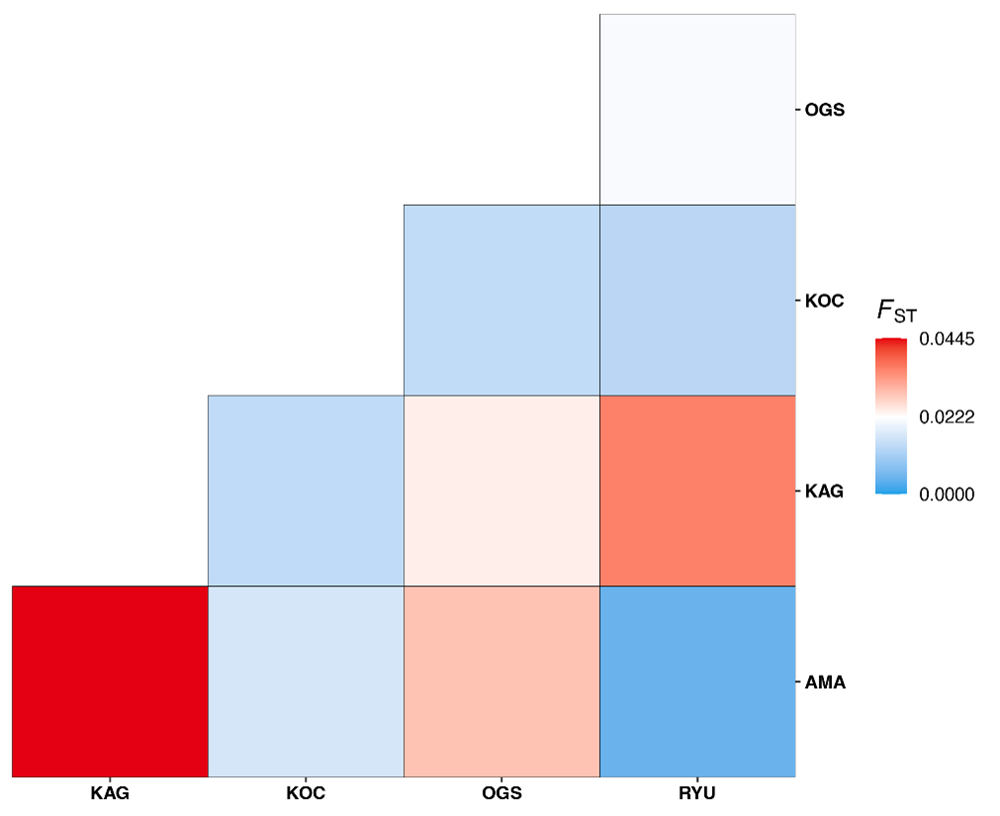The genetic population structure of the precious red coral Corallium japonicum in Japanese waters has been partially revealed
-Contribution to the conservation of precious red coral-
Summary of the AIST Press Release on April 27, 2023,
>>Japanese
Precious red corals have been harvested from Japanese waters for 150 years. Consequently, population sizes of these corals have been highly impacted, and precious red corals have been designated as “Near Threatened” by the Japanese Ministry of the Environment. While genetic population structure and connectivity patterns play a crucial role in designing effective conservation strategies, little research has been conducted on the population genetics of precious red corals in the Northwest Pacific region including Japanese waters.
A joint research team consisting of the Geological Survey of Japan, AIST, Rissho University, and other institutes, has partially revealed the genetic population structure of the precious red coral Corallium japonicum by using large sets of single nucleotide polymorphisms based on the restriction-site-associated DNA sequencing. Furthermore, we also evaluated the connectivity relationships among the populations by simulating larval dispersal.
Clear genetic differentiation between Kagoshima and Amami populations was observed (Fig. 1), suggesting that the Kuroshio Current flowing between the two populations may have caused genetic isolation of part of the Kagoshima population. On the other hand, we did not find any populations with particularly low genetic diversity among the populations examined in this study. In addition, analysis of the amount and direction of gene flow showed that genetic exchange between populations (especially those located in the Kuroshio Current) is widely maintained. Furthermore, simulation of larval dispersal showed that larvae-like particles moved between populations (Fig. 2), supporting the results of the population genetic analysis. The results of this study are expected to provide important basic knowledge that will be useful for the conservation of red corals.
Fig. 1 Heatmap showing genetic differentiations between each population in terms of FST, a measure of genetic differentiation
(Ryukyu: RYU, Amami: AMA, Kagoshima: KAG, Kochi: KOC, and Ogasawara: OGS). Low FST values (light blue) indicate that genetic differentiations between populations are small and genetic exchange is frequently maintained.
On the other hand, the highest FST values (red) were detected in Kagoshima and Amami, indicating relatively large genetic differentiations between these two populations.
Fig. 2 The results of simulation of larvae-like particle release are shown for sampling sites.
The red and orange stars represent the particle release and sampling points, respectively.
The light blue lines indicate the trajectories of the particles.
Publication details
Kise H, Iguchi A, Saito N, Yoshioka Y, Uda K, Suzuki T, Nagano AJ, Suzuki A, Iwasaki N. Genetic population structure of the precious coral Corallium japonicum in the Northwest Pacific. Frontiers in Marine Science, doi:10.3389/fmars.2023.1052033, 2023.


